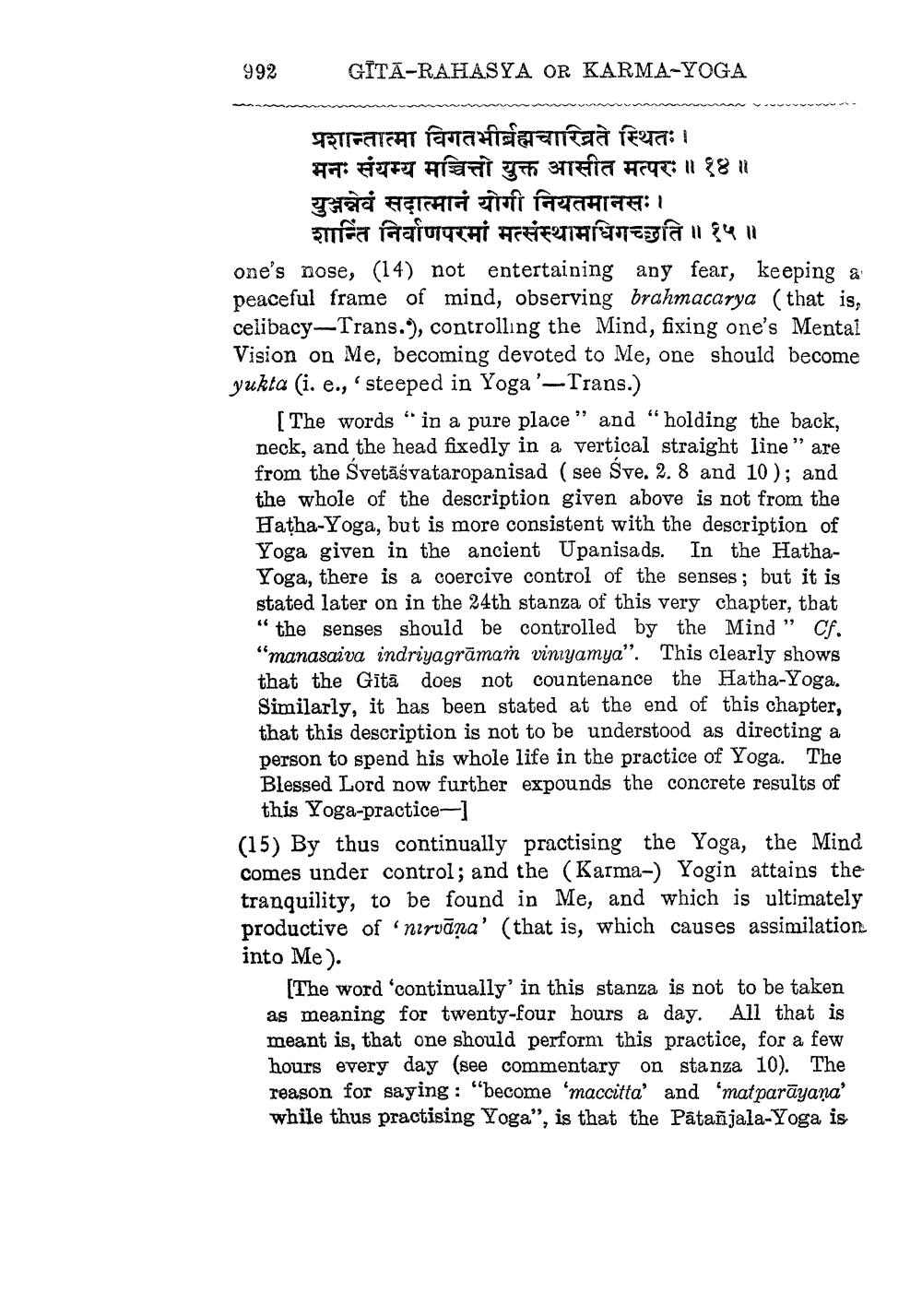________________
992
GÍTA-RAHASYA OR KARMA-YOGA
प्रशान्तात्मा विगतभीब्रह्मचारिव्रते स्थितः। मनः संयम्य मच्चित्तो युक्त आसीत मत्परः ॥१४॥ युञ्जन्नेवं सदात्मानं योगी नियतमानसः।
शान्ति निर्वाणपरमां मत्संस्थामधिगच्छति ॥१५॥ one's nose, (14) not entertaining any fear, keeping a peaceful frame of mind, observing brahmacarya (that is, celibacy-Trans.), controlling the Mind, fixing one's Mental Vision on Me, becoming devoted to Me, one should become yukta (i. e., 'steeped in Yoga'-Trans.)
[The words“ in a pure place" and "holding the back, neck, and the head fixedly in a vertical straight line" are from the Svetāśvataropanisad (see Sve. 2. 8 and 10 ); and the whole of the description given above is not from the Hatha-Yoga, but is more consistent with the description of Yoga given in the ancient Upanisa ds. In the HathaYoga, there is a coercive control of the senses; but it is stated later on in the 24th stanza of this very chapter, that " the senses should be controlled by the Mind” Cf. "manasaiva indriyagrāmam viniyamya”. This clearly shows that the Gītā does not countenance the Hatha-Yoga. Similarly, it has been stated at the end of this chapter, that this description is not to be understood as directing a person to spend his whole life in the practice of Yoga. The Blessed Lord now further expounds the concrete results of
this Yoga-practice(15) By thus continually practising the Yoga, the Mind comes under control; and the (Karma-) Yogin attains the tranquility, to be found in Me, and which is ultimately productive of nirvana' (that is, which causes assimilation into Me).
[The word 'continually' in this stanza is not to be taken as meaning for twenty-four hours a day. All that is meant is, that one should perform this practice, for a few hours every day (see commentary on stanza 10). The reason for saying: "become 'maccitta' and 'matparāyana' while thus practising Yoga", is that the Patañjala-Yoga is




